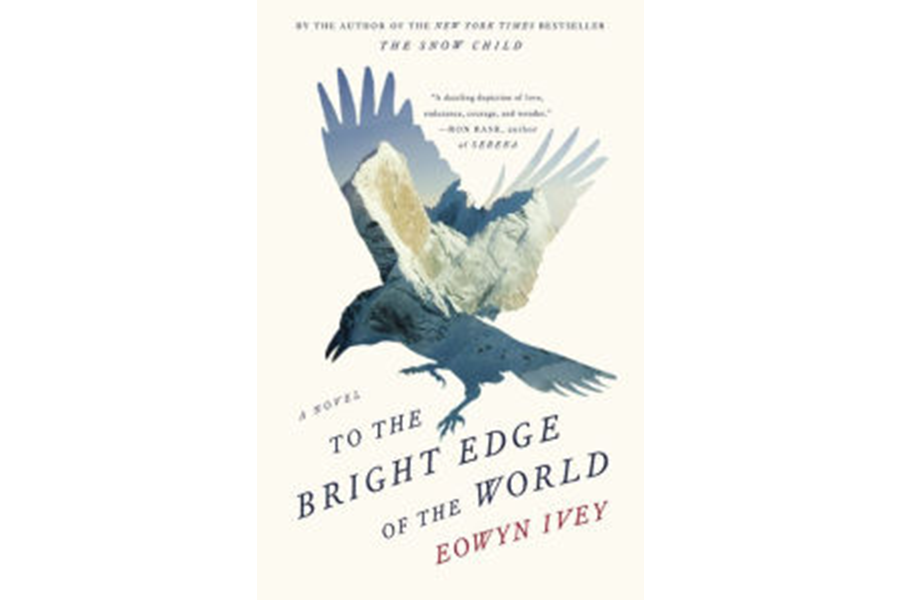'To the Bright Edge of the World' hauntingly portrays Alaskan wilderness
Loading...
The childless married couple in Eowyn Ivey's elegant 2012 debut "The Snow Child" venture to the forbidding frontier of 1920 Alaska's Wolverine River wilderness in search of some kind of salvation or renewal; they've recently suffered a miscarriage, and in the wild they encounter both wonder and hardship beyond anything they'd expected. The book is both lovely and bracing, and Ivey's new novel, To the Bright Edge of the World, set in the Alaska a generation earlier than "The Snow Child," raises the personal stakes and the emotional payoff to impressive new levels. "To the Bright Edge of the World" is a stunning and subtle performance.
The story here likewise revolves around a married couple: In 1885, Lieutenant Colonel Allen Forrester and his wife Sophie voyage to the Wolverine River basin, where Allen has been given the task of leading an expedition deep into the interior of the Alaskan Territory, into terrains and possible dangers no White men have ever encountered. Sophie, chafing to go exploring right alongside her husband, must instead wait for his return at the Vancouver Barracks surrounded by strangers.
In a series of journal entries, we follow Colonel Forrester's arduous travels, which are based in part on the 1885 expedition headed by Lieutenant Henry T. Allen, who wrote Report of an Expedition in the Copper, Tanana, and Koyukuk Rivers in the Territory of Alaska. Forrester commands a motley assortment of men, including coarse, brutish Sargent Tillman, cerebral Lieutenant Pruitt, and an enigmatic old native guide, and the landscapes they discover are a vibrant, constantly-changing new world. “It is remarkable, the transformation of this land,” Forrester notes at one point about the wildly different seasonal changes around him, “the landscape before us seems impossible.”
His journeys have their canny and equally-disturbing parallel in the pregnancy Sophie experiences back at the Vancouver Barracks, and the curiosities and perils in each case are highlighted by the book's many spot illustrations: Forrester's showing sprawling rivers and glaciers, Sophie's showing womb deformations and stages of fetus growth. The contrast is complicated and intensified when Allen's expedition encounters a mysterious infant in the wilderness, an event Ivey characterizes as half-hallucinatory. “It will not leave me,” Forrester writes in his journal. “Clear fluid bubbling up from the ground.
Clotted blood & moss once side and the same. Can it be true?”
“At times,” he adds, “I no longer know – am I awake or dreaming?”
That undertone of delirium begins to dominate the inland expedition. The men gradually run out of healthy food and begin succumbing to fatigue and, in Pruitt's case, scurvy. The awe-inspiring natural world around them serves only to accentuate their helplessness, driving each soldier to different extremes of delusion and ecstasy. “Can something half-dead and rotted to pale be resurrected?” Pruitt writes in his journal upon discovering the bleached skull of a mammoth in a river bed. “Can the clean breath of this land enter me?”
That yearning – to be made clean, to come through purifying ordeals – is felt on both sides of the narrative Ivey crafts. It's this outcome that Sophie hopes for as her condition worsens at the barracks, and it's this outcome that seems to baffle Pruitt in the advanced stages of his illness, prompting him to reflections that deeply trouble his commanding officer. Elemental is the concept the sick man keeps using; “Hunger, sun, cold. Pure unto themselves. No false veil between a man & a world around him … No pretenses. Nothing to hide behind.”
Ivey, who was raised in Alaska and still lives there, can't resist folding an extra layer of irony into her tale. The novel's historical narrative is framed by Allen Forrester's great-nephew in the present day. He's an old man now, attempting to interest a museum curator in his great-uncle's account of the expedition, knowing that otherwise the faded papers will simply be discarded when he himself dies. The sense of futility is further compounded by Ivey's simulation of a modern-day travel brochure for the Wolverine River territory, complete with promise of “Friendly, informed guides. Freshly prepared meals. Comfortable sleeping quarters. The adventure of a lifetime.”
It's a parting fillip that undercuts the suffering of Forrester and his men while also catching its echoes: tourists are promised a view of “dramatic Forrester Canyon” while enjoying all the comforts of home.
Such a pitiless telescoping of time is an illusion, however, as Ivey surely knows. Pre-packaged tourism might be an easy counterpoint, but the hinterlands beyond the Wolverine River have lost none of their ability to inspire feelings of awe and insignificance. The rivers and tributaries are wide and brawling; the forests and brush teem with enormous grizzlies and murderous moose; and the weather when winter comes down the mountains is still every bit as elemental as Ivey's characters find it at the end of the 19th century.
One of the many wonders of "To the Bright Edge of the World" (and "The Snow Child" before it) is the skillful, confident way it invests the elemental with human dimensions. This is enchanted writing.








